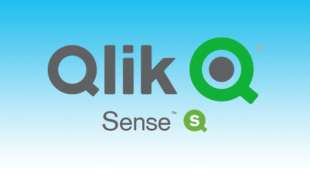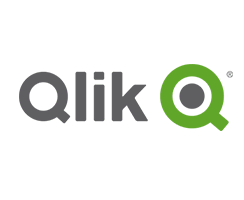
Tableau Interview Questions & Answers – Updated 2020
Question 1
Define the different type of Tableau Products?
Tableau Reader:
Tableau Desktop is a place where the visualizations are built and we can open and view them with this free desktop application. It is read-only, so we cannot perform any other interactive tasks and edit them but we can drill down the data and filter it.
Tableau Server:
This Tableau software is mostly used at the enterprise level. The web-based Tableau server shares throughout the organization the dashboards that are published with Tableau Desktop. The fast databases can be leveraged through its live connections.Tableau Public:
We can easily construct the visualizations with this free Tableau software, but as it belongs the public, we are required to save the worksheets or the workbook in the Tableau Server to be accessed by anyone.
Question 2
Define Dimensions and Measures in Tableau?
Measures:
Measures can be analyzed by the dimension table and they are the measurable quantities or the numeric metrics of the data. The table that contains the measures is consist of the foreign keys and they distinctly refer the associated dimension tables. Multiple numbers of records can be inserted in a single instance because of the support of the table to store the data at the atomic level. For example, customer key, product key, items sold, and promotion key and many more can be in a sales table and refers to a specific event.
Question 3
Explain the different types of connections made with the dataset?
Extract: The data can be made as a static snapshot with an extract and is used as the data engine of Tableau. And on a recurring schedule, the snapshot of the data is refreshed or it can increasingly append the data and the Tableau server is very useful to set up these schedules. Even without any connection, we can use the extract and any of our own visualizations can be built without any connection to the database. This is the major advantage of Tableau extract over the live connection.Live: the computational storage and processing can be leveraged by connecting live to a dataset. And the database will have the new queries and it will be displayed as updated or new within the data.
Question 4
Describe Tableau Desktop?
Question 5
Explain Tableau Data Server?
The resources of the servers can be leveraged and they do not have to be transferred to the local machine first and it can be used to run queries on extracts.
Question 6
Explain and distinguish the filters in Tableau?
There are three different types of filters are used in Tableau:
Context
Quick
Normal/Traditional
The data that can be transferred to each individual worksheet is filtered by the Context Filter. A worksheet creates a temporary flat table when it queries the data source. And to compute the chart this flat table is used. The values that are not filtered out by either the Context Filter or the Custom SQL are included by this temporary table.
To filter each worksheet on a dashboard and to view the filtering options Quick filter is used. The dashboard worksheet can even be filtered dynamic changes of the values during the runtime.
A Normal Filter works on the basis of the selected measure and dimension so as to restrict the data from the database. Just by dragging a field onto the ‘Filters’ shelf we can create a Traditional Filter.
Question 7
How aggregation of data works in Tableau?
Question 8
Explain the concepts of Schedules and Extracts in Tableau server?
Answer : The extracts and workbook get refreshed only when a scheduled refresh on the extract is applied by the users. In order to get them refreshed during the publication of a workbook with data extract, the scheduling tasks that are set for data extract are called Scheduled Refreshes. So we do not have to republish the workbook every time during the upgrade of the data.The subdivisions or the first copies of the original data from the actual data sources are known as data extracts. Since the extracted data is imported into Tableau Engine, workbooks that use the data extracts are faster, unlike those using live DB connections. Users can publish the workbook that also extracts and publishes in Tableau Server after this extraction of data.
Question 9
Describe the TDE file?.
Primarily, TDE is a columnar store. The processes of memory loading and its usage by Tableau is impacted by the way of its very structure. So TDE is known for being “architecture aware”. TDE puts each part of the computer memory, from hard disk to RAM, to work what best fits its features.
Question 10
Explain in detail default Data Blending Join?
Question 11
Explain Disaggregation in Tableau?
Question 12
Distinguish continuous and discrete in Tableau?
Continuous data takes into account any value within an infinite or finite interval and it is used to measure continuous data. Order quantity, profit, time, and the unit price comes into this category. And continuous variables can take on any value as they can be seen in that same way.
Discrete data takes only the individual values within a range and it is counted as separate and distinct. Customer name, State, threads in a sheet, and row ID are these categories.
Question 13
In Tableau, what is blended axis?
Question 14
In Tableau, How can we do the Performance Testing?
Question 15
Explain the differences between twbx and twb file extensions.
Twb relates and points to the data source and it is a live connection. Permission has to be obtained for the users receiving twb, without which the data is not included.
Question 16
What are the main differences between the traditional BI tools and the Tableau Software?
Apart from the issues with the data foundation, Tableau provides a vast amount of services like Visual Analytic capabilities. We can have a complete package by combining both Tableau and SQL Server.
Question 17
Define data modelling?
Question 18
How is the workbook scheduled and published in the tableau server?
Question 19
How is Tableau integrated with R?
Question 20
How to view SQL, a creation of the Tableau Desktop?
We covered all the major Tableau Interview Questions, Check our Tableau Tutorials to Experience the joy of executing the things that you learned in Tableau Training in Chennai from us.
Tutorial 1: How to Create a Donut Chart in Tableau
Tutorial 2: How to Create a Waterfall Chart in Tableau
Blog Topic: Qlikview vs Tableau




